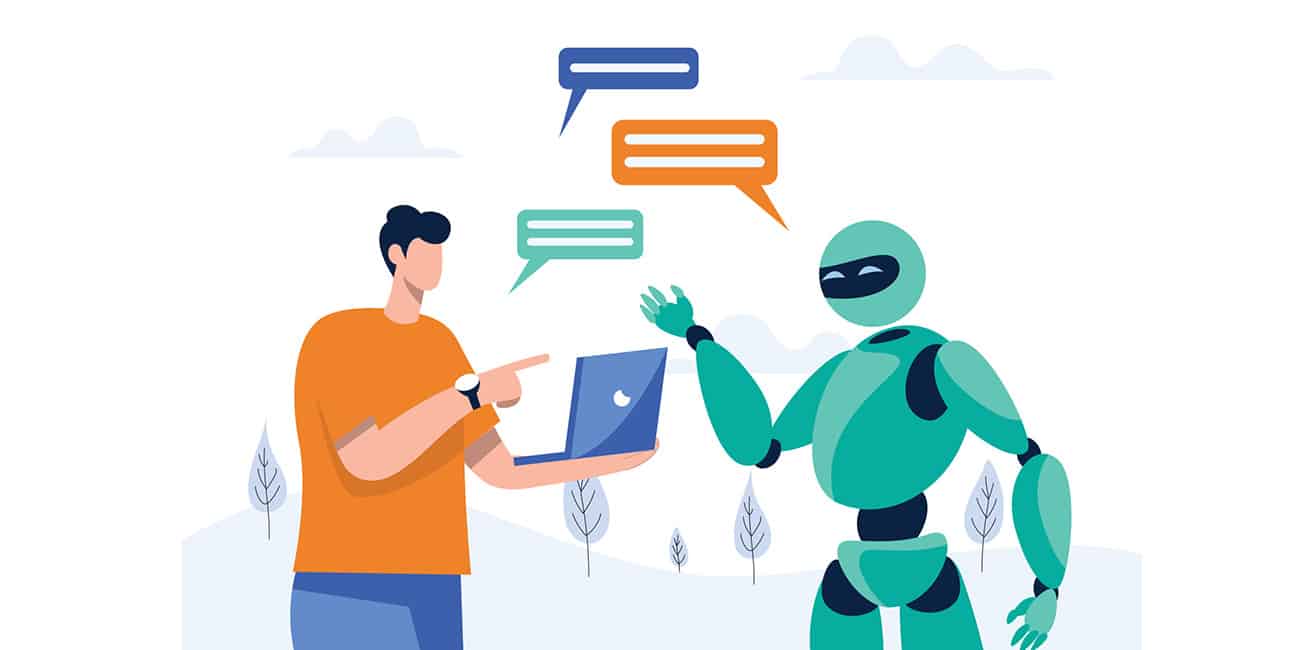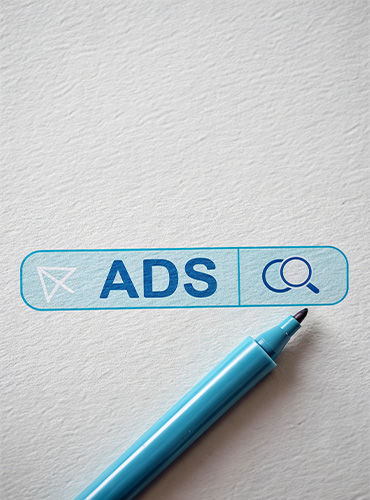
AI chatbots reshape how businesses operate today. Employees who use generative AI show a 40% boost in performance compared to their non-using counterparts. The investment outlook points to $1.3 trillion by 2030, which shows how faster businesses adopt these tools.
You might wonder what chatbots are and why they matter. An AI chatbot is a computer program that mimics human conversation through artificial intelligence. Traditional chatbots stick to pre-programmed scripts, but AI-powered ones learn from each interaction and understand context to generate dynamic responses. These smart tools now handle thousands of customer interactions at once. They give instant answers and help cut down support costs.
Let’s explore the world of chatbots and their AI-powered rise together. We’ll give you straightforward explanations and useful insights, whether you want to learn about their working or plan to add one to your business.
What Is an AI Chatbot?
AI chatbots are computer programs that simulate human conversation through artificial intelligence techniques. These digital assistants process and understand human language, which allows them to have natural, flowing conversations that sound human-like. AI chatbots learn continuously from interactions and become more intelligent as time passes.
Definition and simple concept
An AI chatbot is a sophisticated program that combines machine learning, natural language processing (NLP), and natural language understanding (NLU) to interpret user intent and provide appropriate responses immediately. These chatbots extract important information from conversations and analyze language patterns to give relevant, contextual answers.
A chatbot is an example of an AI system and one of the most elementary and widespread examples of intelligent Human-Computer Interaction (HCI). These systems can process text, voice, and sometimes even visual inputs to involve users in meaningful dialog.
How it is different from traditional chatbots
Traditional chatbots work on predefined rules and decision trees – they are like digital versions of interactive voice response (IVR) systems that follow strict if/then statements. They respond only to specific commands or keywords and struggle with unexpected queries.
AI-powered chatbots, on the other hand:
- Understand natural language beyond programmed commands
- Learn from previous conversations to improve responses
- Recognize context and maintain conversation memory
- Adapt to user priorities over time
- Process various inputs including text, voice, and sometimes images
Examples of AI-powered chatbots
Several prominent AI chatbots showcase these advanced capabilities:
Apple’s Siri and Amazon’s Alexa are prime examples of “consumer-oriented, evidence-based, predictive chatbots” that understand context and adapt to user priorities. These digital assistants use “predictive intelligence and analytics to enable customized experiences based on user profiles and past user behavior”.
Bank of America’s Erica shows another soaring win by providing customized financial advice and completing “over 330 million requests, at the rate of 56 million interactions every month”. Business-focused options like IBM Watson and Amazon Lex provide sophisticated platforms for companies to build their own conversational interfaces.
Modern AI chatbots have evolved significantly from earlier programs like SmarterChild (2001). They now understand nuance, detect sentiment, and respond with appropriate humor or empathy.
Key Features That Make AI Chatbots Powerful
Modern AI chatbots have sophisticated capabilities that lift them above simple automated tools. These features create intelligent, responsive systems that truly understand how humans communicate.
Natural language processing (NLP)
NLP capabilities are the foundations of any AI chatbot that works well. AI chatbots can interpret messages, extract key information, and determine intent – whatever way the question is asked. Advanced chatbots use entity extraction to get structured information (dates, times, or product names) and intent classification to identify what users want. A customer might ask “Do you have any blue shirts available?” The chatbot picks up both the entity (blue shirts) and the intent (checking availability).
Machine learning and adaptability
AI chatbots stand out because they evolve over time. These systems use machine learning algorithms to analyze patterns in large datasets and refine their responses based on new interactions. AI-powered chatbots adapt to changing situations instead of following static scripts. Each conversation makes the chatbot smarter and more functional.
Context awareness and memory
AI chatbots’ most impressive feature is their conversation memory. Context-aware chatbots remember past exchanges and use that information in their responses, unlike traditional bots that see each message in isolation. Users don’t need to repeat themselves in these flowing conversations. Someone might ask “What’s the capital of Ireland?” and then “How about France?” The chatbot knows the second question is about France’s capital.
Multilingual support
Today’s advanced chatbots speak multiple languages without needing separate programming for each one. Many handle dozens of languages at once. Some platforms even detect and adapt to users’ preferred languages automatically.
Integration with business tools
AI chatbots become more valuable when connected to other business systems. They can access customer records, product databases, and internal knowledge bases through APIs and middleware solutions. This makes shared responses possible and lets chatbots take meaningful actions like updating information or processing orders.
AI Chatbot vs Virtual Assistant vs Agent

Beginners often get confused about the different types of conversational AI technologies. Chatbots, virtual assistants, and AI agents might look alike at first glance, but each serves unique purposes based on what they can do.
Differences in autonomy and complexity
These technologies differ mainly in how independently they work. AI chatbots sit at the simplest level of this range—they react to specific conversations and need direct user input to work. Virtual assistants pack more advanced features. They can handle complex queries and schedule appointments. AI agents lead the pack with their ability to work almost independently. They make decisions and take action with minimal human oversight.
Here’s a simple way to picture it: a chatbot works like a vending machine with set responses, while an AI agent is more like a personal chef who gets your complex requests and adapts to your priorities.
Ideal use cases for each
AI chatbots handle repetitive tasks well. They answer FAQs, track orders, and provide simple customer support. Brand messaging consistency makes them especially valuable.
Virtual assistants excel at handling complex tasks. They process customized queries, manage smart home devices, and give tailored recommendations based on user data. They also keep track of context, which helps them talk more naturally.
AI agents shine when it comes to complex decision-making and making processes better. They analyze help desk tickets, recommend documentation updates, and fix IT problems on their own.
How to know which one you need
Your specific needs should guide your choice:
- Pick a chatbot when you need: consistent answers to common questions, have tight budgets, or want to automate straightforward customer interactions
- Go with a virtual assistant when: customization matters, you deal with sensitive data across multiple interactions, or need flexible conversation abilities
- Choose an AI agent when you need: independent decision-making, better workflows, or tasks done proactively with minimal human input
Customer-facing scenarios often work best with a mixed approach. Use chatbots where predictability counts and agents where flexibility matters most.
Real-World Use Cases of AI Chatbots
Companies are using AI chatbots to solve their business problems and get real results. Here’s a look at how these digital assistants make the biggest difference.
Customer service and support
AI powered chatbots now handle complete customer conversations without any human help. Photobucket’s AI agents now give instant answers to 94% of common questions, and these agents solve problems on their own 10% of the time. The results at Hello Sugar show what’s possible – they automated 66% of support tasks and saved $14,000 every month. Most businesses that use AI virtual agents cut their customer service costs by up to 30%.
Internal IT and HR help desks
Support teams use chatbots to handle common employee requests. IT teams let these tools take care of password resets and account unlocks, which make up about 80% of all support tickets. HR departments use them to manage leave requests, answer salary questions, and guide new employees through onboarding. The results speak for themselves – ACLU’s help desk automation earned a 90.5% satisfaction score from employees.
Sales and lead generation
AI chatbots shine at finding and qualifying sales leads. These tools handle 70% of sales conversations from beginning to end, which lets sales teams focus on the most promising leads. On top of that, they boost abandoned cart recovery by 7-25% and slash lead generation costs. Some companies have cut their cost per lead by 200% by using chatbots.
E-commerce and product recommendations
Retail chatbots help shoppers find products through customized suggestions. They search product catalogs based on what customers want – things like gender, occasion, and category. They also track orders, handle returns, and give shipping updates. These benefits explain why more online stores use chatbots every day.
Healthcare and appointment scheduling
AI chatbots help healthcare providers manage appointments better. Patients can book visits any time, get automatic reminders, and share their information before visits. This helps people in rural areas get care more easily and provides support even after hours. Medical facilities spend less time on paperwork and have fewer missed appointments.
Conclusion
AI chatbots have come a long way from their rule-based predecessors. This piece explores how these intelligent conversational systems now serve as powerful tools for businesses of all types. The development from simple scripted responses to sophisticated context-aware interactions marks a huge technological leap forward.
Natural language processing, machine learning capabilities, contextual awareness, multilingual support, and business system integration work together seamlessly. These core features create truly useful conversational experiences. Chatbots now understand user intent whatever the phrasing. They learn from past interactions and maintain coherent conversation flows.
The difference between standard chatbots, virtual assistants, and fully autonomous AI agents needs clarity. Each solution serves specific business needs based on complexity and decision-making capability. Your specific requirements should drive the choice rather than following technological trends.
Ground applications show the practical value these tools deliver. Customer service teams achieve high automation rates while cutting costs. Support departments handle repetitive requests faster. Sales teams qualify leads quickly. E-commerce businesses improve product discovery. Healthcare providers make appointment scheduling easier.
Without doubt, AI chatbots will keep advancing with newer technologies. Understanding these core concepts gives you a solid foundation to start with. The technology deserves serious thought from businesses of all sizes. It offers improved efficiency, lower costs, and better customer experiences.




